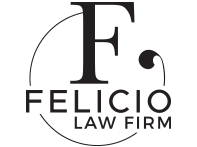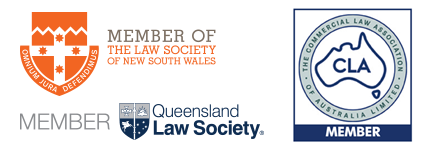
Bankruptcy is a highly charged word. For many people it represents financial and personal failure, with an attendant loss of confidence and self-esteem.
But in some situations declaring yourself bankrupt is the most logical and sensible course of action, allowing you to extract yourself from a financial and legal quagmire and start afresh.
Below we’ll take a brief look at the advantages, as well as some of the disadvantages, of declaring bankruptcy. If you think this is an option you will require, you should consult a legal professional with experience in this area of the law such as Felicio Law Firm.
Why choose bankruptcy?
There are few things more stressful than falling behind on your debts. Doing so usually unleashes a cascade of unpleasant consequences – creditors chasing you for payment, threats of legal action to recover debts, and an inability to get yourself out of the debt hole.
When you declare bankruptcy, many of these consequences are stopped so that you can get your affairs in order. A registered trustee, who you are able to nominate, is appointed to manage the bankruptcy. The Australian Financial Security Authority (AFSA) will appoint a trustee if you don’t nominate one. The trustee’s role is to work with you and your creditors in order to find solutions which are fair and reasonable to all parties in the circumstances.
During bankruptcy you must provide necessary information to your trustee, including bank details, statements, pay slips and other documents which help clarify your current financial position.
This process helps prevent constant harassment by creditors, halts any legal proceedings against you to recover debt, and prevents the Sheriff from seizing any of your personal assets (except for new debts incurred after bankruptcy) in order to satisfy debts. If your wages or bank account are being garnished, this will also stop under bankruptcy (except in certain instances by the Australian Tax Office). In most cases, you are still able to earn an income, too.
Personal property protected under bankruptcy is indexed to maintain pace with the Consumer Price Index or the base pension rate. Property that cannot be taken and sold for the benefit of creditors includes your ordinary clothing; necessary household property (e.g. furniture and appliances, but not antiques or items of exceptional value); tools of trade up to the value of $3,800 and a car worth no more than $8,000 (as of October 2020); your superannuation and life insurance policies, including payments from either policy received on or after the date of the bankruptcy; and any compensation received directly by you for personal injury.
There are also indexed limits over which you are not able to propose a debt agreement with creditors. These include $118,063 in unsecured debts, $236,126.80 in divisible assets and $88,547.55 in after-tax annual income (all correct amounts as of October 2020).
What happens to my debts?
When you file for bankruptcy you are generally freed from unsecured debts such as credit cards, unsecured personal loans and pay day loans; gas, electricity, phone and internet bills; overdrawn bank accounts; unpaid rent, and; medical, legal and accounting fees for the period of bankruptcy.
Other debts such as those owed to Centrelink or the ATO, or fines for parking infringements, tolls, etc, may not be ended by declaring bankruptcy. Other debts such as child maintenance and support, court-ordered fines or penalties, HECs, unliquidated debts or debts incurred after you filed for bankruptcy, cannot be avoided through bankruptcy. Legal advice should be sought.
Drawbacks of declaring bankruptcy
You must declare all your assets to the trustee once you become bankrupt. While some of your property and assets are protected, as outlined above, most will be sold to pay your debts, including your home. Cash in bank accounts over an amount considered necessary to live can also be taken.
If your income is over the indexed amount, this can also be used to make contributions towards your debts.
Some professions and licensed trades will restrict or prohibit your ability to work while you are in bankruptcy, and you will not be permitted to travel overseas without the permission of your trustee. In some cases you will be asked to surrender your passport.
During bankruptcy, you may experience difficulties accessing credit, renting a property or taking advantage of others services (such as taking out insurance) that most people take for granted. This is because your status as a bankrupt is listed on your credit report for a number of years after your discharge and is also permanently listed on the National Personal Insolvency Index.
The effects of these listings can be severe and long-lasting, preventing you from finding a place to live or to borrow money in order to start afresh. Furthermore you will not be able to hold a position as a company director, any money or assets received during bankruptcy will be taken by the trustee to satisfy your debts, and you are limited in your ability to commence legal proceedings against anyone without the permission of the trustee.
How long does bankruptcy last?
A person is usually discharged from bankruptcy after three years and a day, however a trustee can apply to have the period of bankruptcy extended for up to eight years.
If you are unsure whether bankruptcy is the right course to take, on the balance of the factors we’ve presented in this article, contact Felicio Law Firm today. We have considerable experience advising clients facing financial difficulties related to debts. We will work with you to understand both the advantages and the disadvantages of filing for bankruptcy so that you can make a decision that is right for your situation both now and into the future. Call us Erina Conveyancing today on (02) 4365 4249.


